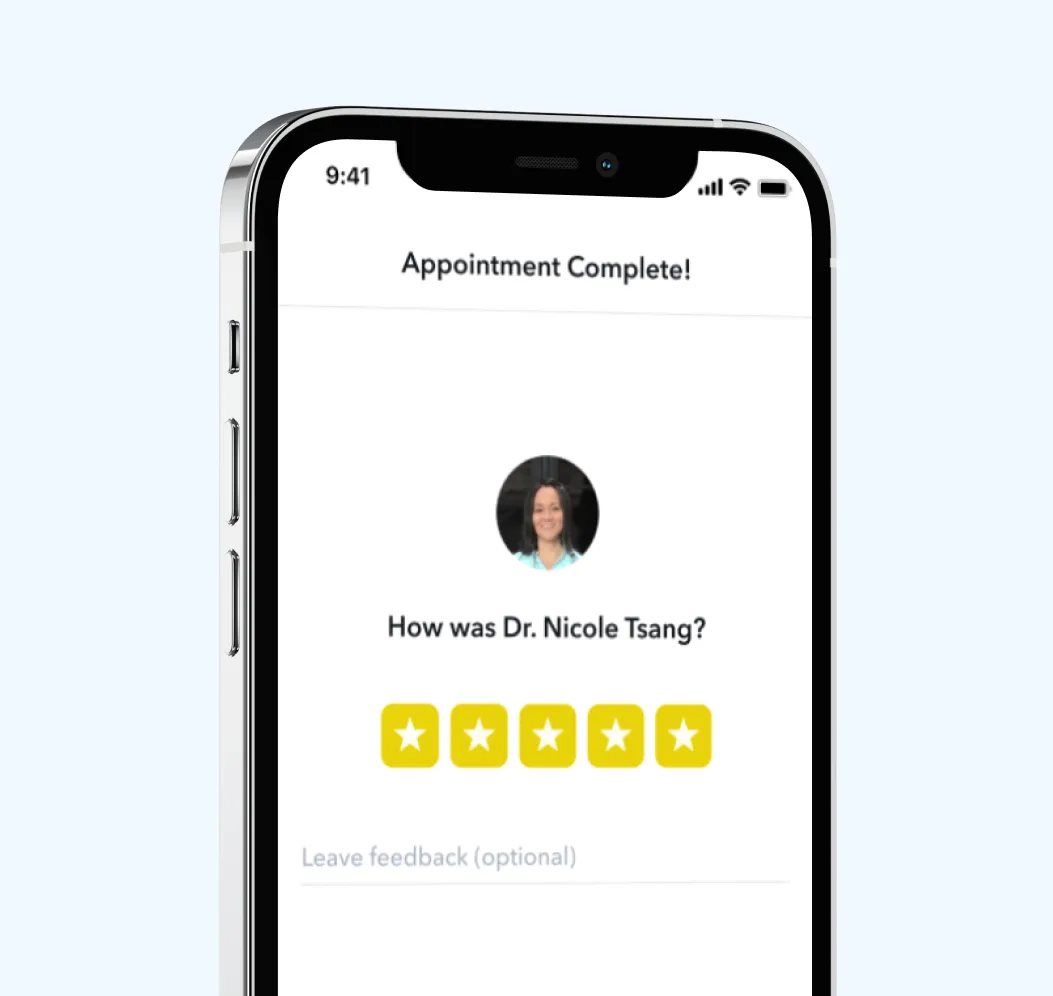All posts
When to See a Doctor for Allergies

Circle Medical Staff
May 21, 2023
8 mins

Seasonal allergies can be frustrating and affect your daily life. But when should you see a doctor for your allergy symptoms? Allergies aren’t always easy to manage, and sometimes intervention from a health care provider is required to find relief.
In this blog, we’ll talk about common seasonal allergies and when your doctor can help. Read on to learn more about when to see a doctor for allergies.
What are common allergens?
Allergens are substances that trigger allergic reactions. There are a vast number of allergens, but some of the most common are tree pollen, grass pollen, weed pollen, dander from pets, dust and mold.
Let’s take a close look at some of these common allergens.
Tree pollen
Tree pollen is one of the most common seasonal allergens. Tree pollen tends to peak in spring, but many tree species pollinate during different times of the year. Tree pollen allergies cause common allergy symptoms like sneezing, coughing, itchy eyes, runny nose and more.
Some of the most common tree pollen allergens include maple, ash, oak, cedar, poplar, walnut, willow, elm and more. Pollen can travel for miles on the wind, so you may be affected by tree allergies even if you’re not close to the trees you’re allergic to.
People can also have cross-reactivity to foods with similar proteins to the proteins found in tree pollen. This can cause OAS or oral allergy syndrome. OAS can cause your mouth or throat to feel itchy while eating certain foods. In some cases, food allergies can be life-threatening and require immediate medical attention.
Grass pollen
Grass pollen is an extremely common allergen. Grass allergies typically begin in spring and peak during the summer months. Grass pollen, like tree pollen, is hard to avoid. The light pollen travels along the wind for miles and causes allergy symptoms. Grass allergies cause common symptoms like sneezing, runny nose, itchy eyes and coughing.
Some common grass allergies include Bermuda, Johnson, Orchard, Sweet vernal and Timothy grass. Those who suffer from grass allergies can also experience OAS symptoms from certain fruits and vegetables.
Weeds
Weeds are a major allergen that typically peaks in the late summer and early fall months. The most common and abundant weed allergen is ragweed pollen. If you’re allergic to ragweed, you will likely experience symptoms like sneezing, runny nose, itchy eyes and more.
Those with weed allergies are also susceptible to OAS from certain fruits and vegetables.
Cat, dog and pet dander
Many people assume that they are allergic to the hair or fur of cats and dogs, but the cat and dog allergens come from dander and saliva. Dander is the dead skin cells that animals shed, which can cause allergy symptoms. Certain proteins in pet saliva are also allergens and can cause symptoms in some people.
Pet allergies are tricky because people don’t want to get rid of a beloved pet when they find out they’re allergic. If the allergies aren’t too severe, there are usually ways to manage symptoms. Symptoms of pet allergies include sneezing, coughing, watery eyes, congestion, itchy eyes, nose, or throat and a runny nose.
Dust and mold
Dust and mold allergies are common indoor allergies that can trigger common allergy symptoms. Dust mites are tiny microscopic creatures that feed on dead skin cells. The droppings and bodies of these creatures are considered allergens. Dust mites can live in carpets, bedding, stuffed animals, upholstery and more.
Mold spores are typically found in cool, damp areas like basements, bathrooms and attics. Mold can also be an outdoor allergy, especially in spring and fall when the humidity and temperatures promote mold growth.
Dust and mold can be year-round allergies. You may need to make changes in your home to reduce your exposure. Mold can be eliminated, and the presence of dust mites can be minimized by taking the proper measures.
What you need to know about seasonal allergies
Seasonal allergies are commonplace, and millions of people suffer from allergies every year. Generally, the symptoms of seasonal allergies may include the following:
- Sneezing
- Coughing
- Itchy, watery eyes
- Congestion
- Runny nose
- Itchy skin
- Rashes or hives
- Fatigue
You can also curb seasonal allergies by mitigating exposure to allergens. Some ways to do this include:
- Keep your windows shut to prevent pollen from getting in
- Vacuum and dust often, preferably with a HEPA filter vacuum
- Get an air purifier with a HEPA filter
- Avoid going outside on high pollen count days
- If you go outside, try to avoid peak pollen hours in the morning and early afternoon
- Remove mold from your house to reduce mold spores
- Don’t hang clothes to dry outside
- Do laundry often and clean your bedding to reduce allergens on your clothes and bed
- Rinse off after being outside, as pollen can easily stick to your skin
- On high pollen count days, wear a mask and sunglasses to reduce exposure
Taking these measures to reduce exposure can help reduce symptoms. Of course, this isn’t always enough. If this is the case, you may want to speak to your doctor.
Before we touch on bringing allergies up to your doctor, let’s talk about when allergy season is.
When is allergy season?
Allergy season is when certain allergens are more prevalent in the air. It can vary based on your location, but generally, allergy season follows this pattern:
- Tree pollen peaks in spring
- Grass pollen peaks in late spring and summer
- Weed pollen peaks in late summer and early fall
- Pet dander, mold spores and dust mites can be prevalent year-round
Truthfully, tree, grass and weed pollen can also be year-round problems. Some tree, grass and weed species release pollen during different times of the year. Some warmer climates may also see these plants release pollen for longer periods. This is why it can sometimes be difficult to pinpoint what somebody is allergic to. If you are unable to curb your symptoms with exposure management and over-the-counter allergy medication, you may need to get an allergy panel to find out the exact cause.
While being aware of the different allergy seasons may give you a clue as to what’s causing your symptoms, it’s not always the best way to learn your allergens. It’s also worth noting that people can develop allergies at any point in their life, so it’s possible that you could develop a new allergy you weren’t aware of previously.
What kind of doctor should you see?
If you suffer from seasonal allergies, you will want to speak to your primary care provider first. They can provide a diagnosis of your symptoms and determine if you need to be referred to an allergist for further diagnosis and treatment. You can easily get a same-day appointment with a primary care provider online with Circle Medical. Telehealth providers like Circle Medical can provide the same quality of care as in-person physicians, with the added convenience and comfort of taking your appointment at home.
Your online primary care provider at Circle Medical can also refer you to an allergist if medically appropriate.
Can I get a referral for an allergist?
If you set up a virtual appointment with your primary care provider at Circle Medical, they will do an initial appointment, review your medical history and talk to you about your symptoms to find out if allergies are the reason. If necessary, they will recommend further testing and refer you to an allergist or order blood work.
An allergist or allergy panel can test you for a wide range of potential allergens, so you can learn the cause of your seasonal allergies. By identifying these substances, your primary care provider can work with your allergist to develop a treatment plan that may include lifestyle changes, allergen exposure mitigation and prescription medication if medically appropriate.
Speaking with your doctor about your allergies can greatly improve your quality of life, so don’t hesitate to speak with your doctor when you have concerns.
Talk to a Telehealth Doctor Today
Telehealth is quickly becoming the preferred health care option for many. With providers like Circle Medical, you’re connected with board-certified physicians who can provide you with quality care remotely. You can save the trips and inconvenience of going to a doctor in person.
Circle Medical can provide appointments and treatment plans for seasonal allergies and a variety of other conditions. If you’re ready to work with health care professionals from the comfort of your home, Circle Medical is your solution.
Get Treatment with Circle Medical
With Circle Medical, you can set up a same-day appointment to address your allergies. No more waiting to get into the doctor. Get help for your health concerns today. Schedule your virtual appointment to get started.
Circle Medical Providers must meet all of the following standards:
-
Exceptionally qualified in their field
-
Board-certified
-
Deeply empathetic for patients
-
Follows evidence-based care guidelines
-
Embracing of diverse patient backgrounds
-
Impeccable record of previous care
400+ Primary Care Providers.
100% Confidence.
No matter which Provider you choose, you will be seen by a clinician who cares deeply about your health and wants to help you live your happiest, healthiest life.
Circle Medical Providers are held to an exceptionally high standard of compassionate, evidence-based care.
Book Appointment

